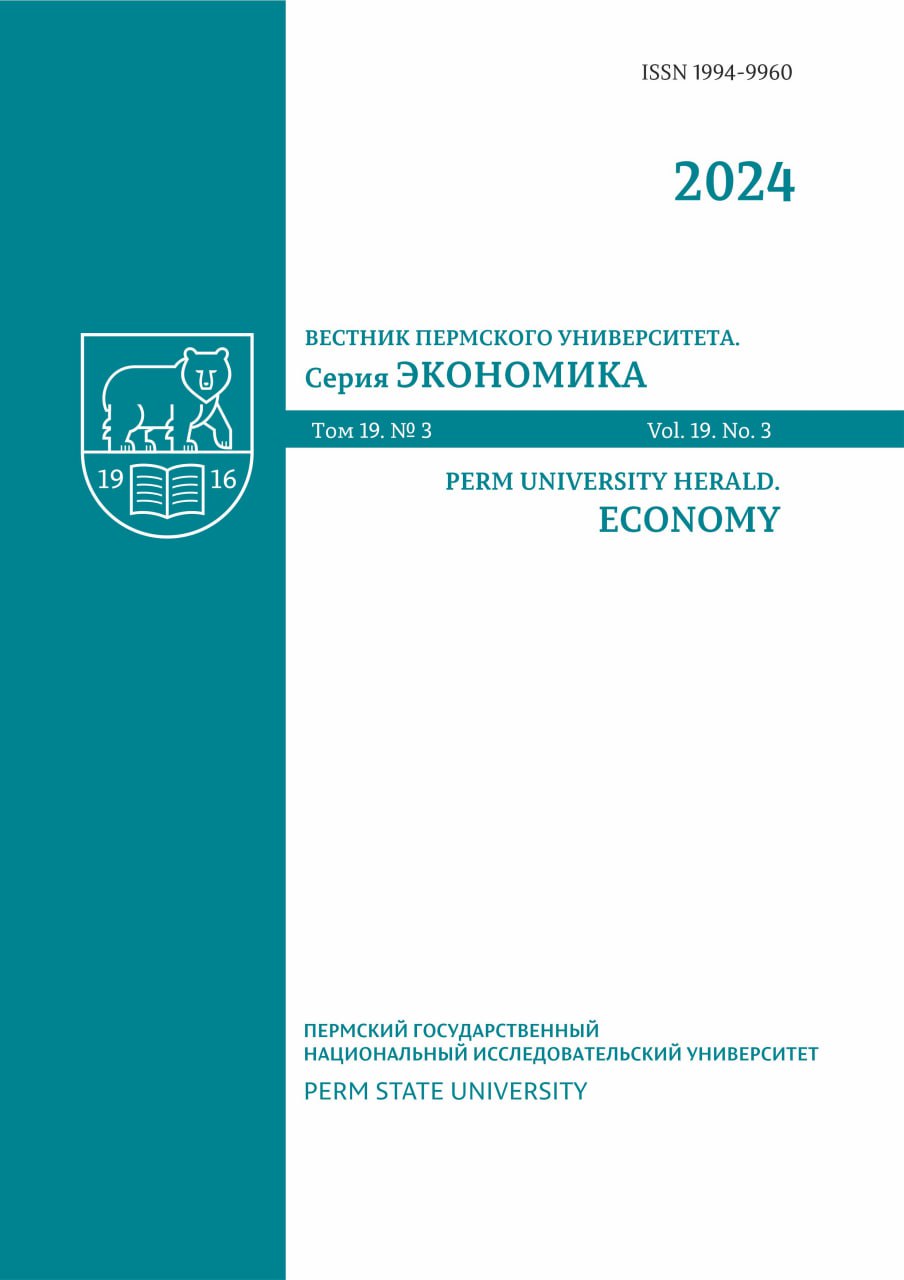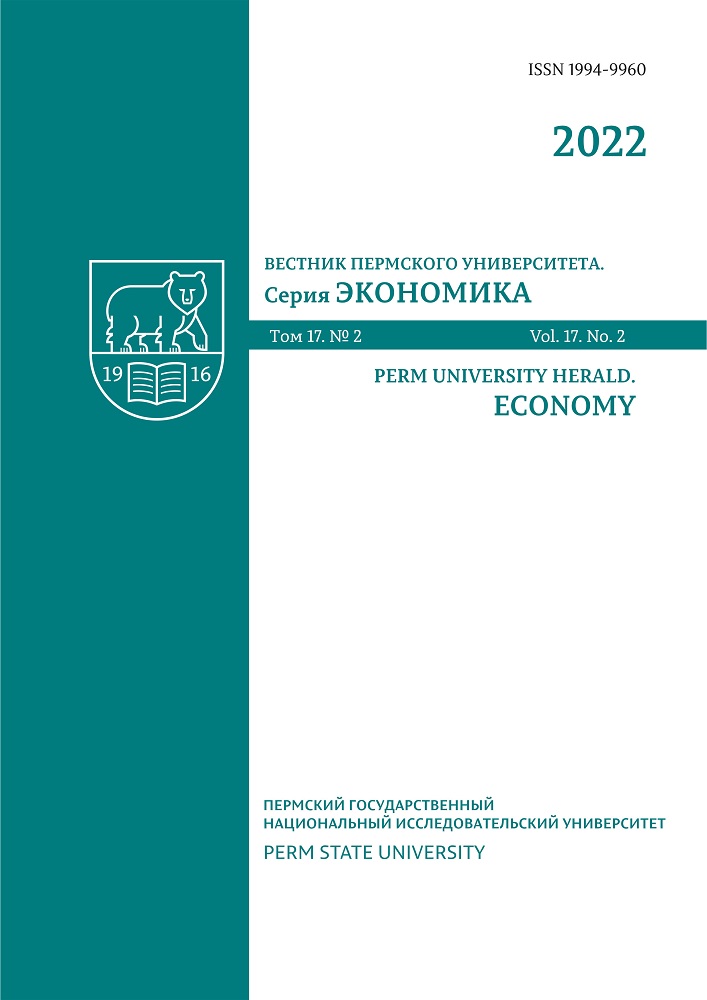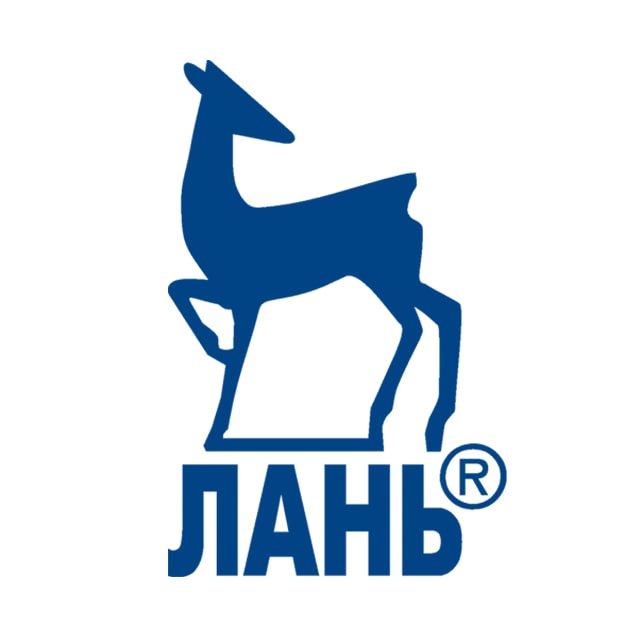Innovations as a factor of economic growth in the Russian regions: Econometric analysis
DOI:
https://doi.org/10.17072/1994-9960-2022-2-145-160Abstract
Today, the extensive sources of economic growth in progressive countries are rather stable and do not drive GDP growth. The number of the employed and the accumulation of physical capital in these states show an insignificant change over a time horizon of up to ten years. Thus, economic growth is likely to be determined by the advancements in labor and applied equipment. At the same time, innovations act as a factor that increases the average efficiency of the economic resources used. Therefore, the stimulation of innovative activity can be one of the main sources for intensive economic growth. The study is devoted to the analysis of innovations in various regions of Russia and innovations’ impact on GRP growth. This article aims at identifying the contribution of the innovation component to the growth of the economy in the regions of the Russian Federation. The stated goal requires panel data based econometric methods. The results of the study give the conclusion that there are domestic and imported innovations. Imported innovations are determined by the dynamics in the import of scientific educational services. At the same time, the 2014–2019 economic sanctions did not affect imported scientific and technological progress. The results of the calculations show that innovation and the accumulation of human capital have become the main factors in Russia’s GDP growth since 2014. Consequently, the stimulation of innovative activity may affect the growth of both the domestic economy as a whole and its individual regions. The conducted research may be of interest to the government bodies handling the economy. Further research should be focused on the public management methods at the level of innovation for better performance.
Keywords: innovations, economic growth, fixed-effects model, economic growth factors
For citation
Shimanovsky D.V. Innovations as a factor of economic growth in the Russian regions: Econometric analysis. Perm University Herald. Economy, 2022, vol. 17, no. 2, pp. 145–160. DOI 10.17072/1994-9960-2022-2-145-160
REFERENCES
- Kuznetsov S.G. Metodologiya makroekonomicheskogo analiza i prognozirovaniya sprosa na rabochuyu silu i ee predlozheniya. Diss. dokt. ekon. nauk [Methodology of macroeconomic analysis and forecast for labour demand and its offers. econ. sci. diss.]. Moscow, 2005. 331 p. (In Russian).
- Barabash N.S., Bochkovskii P.P., Shamsutdinov Yu.A. Vliyanie institutsional'noi i infrastrukturnoi sred na razvitie innovatsii v sovremennom mire [Impact of institutional and infrastructural environment on innovation development in the modern world]. Problemy prognozirovaniya [Forecasting Issues], 2017, no. 3 (162), pp. 75–89. (In Russian).
- Solow R.M. Technical Change and the Aggregate Production Function. Review of Economics and Statistics, 1957, vol. 39, no. 3, pp. 312–320. DOI: 2307/1926047
- Lucas R.E. On the mechanics of economic development. Journal of Monetary Economics, 1988, vol. 22, iss. 1, pp. 3–42. DOI: 1016/0304-3932(88)90168-7
- Dubovskii S.V. Modelirovanie tsiklov Kondrat'eva i prognozirovanie krizisov [Kondratiev waves modeling and crisis forecasts]. Kondrat'evskie volny [Kondratiev Waves], 2012, no. 1, pp. 179–188. (In Russian).
- Pogosov I.A. Faktory dolgosrochnogo ekonomicheskogo rosta: nauchno-tekhnicheskii progress i kapitaloemkost' proizvodstva [Factors of long-term economic growth: Scientific technological progress and capital requirements of production]. Problemy prognozirovaniya [Forecasting Issues], 2015, no. 5 (152), pp. 11–16. (In Russian).
- Lazareva E.I., Lozovitskaya D.S. Ekonometricheskaya otsenka parametra nauchno-tekhnicheskogo progressa v modeli innovatsionnogo ekzogennogo ekonomicheskogo rosta [Econometric evaluation of the scientific and technical progress in the innovative exogenous economic growth model]. Vestnik Rossiiskogo universiteta druzhby narodov. Seriya: Ekonomika [RUDN Journal of Economics], 2020, vol. 28, no. 1, pp. 123–136. (In Russian). DOI: 22363/2313-2329-2020-28-1-123-136
- Dadashova T.A., Artishevskaya N.V. Modelirovanie vliyaniya urovnya nauchno-tekhnicheskogo razvitiya na ekonomicheskii rost Rossiiskoi Federatsii [Modeling the impact of the level of scientific and technological development on the economic growth of the Russian Federation]. Novoe v ekonomicheskoi kibernetike [New in Economic Cybernetics], 2021, no. 1, pp. 11–21. (In Russian).
- Petukhov N.A., Arkhipova M.Yu., Nizhegorodtsev R.M. Faktory ekonomicheskogo rosta regionov: regressionno-klasternyi analiz [Factors of regions’ economic growth: Regressive cluster analysis]. Kharkiv, INZhEK Publ., 2009. 416 p. (In Russian).
- Noskov A.A., Tret'yakova E.A. Vliyanie nauchno-innovatsionnoi deyatel'nosti vuzov na innovatsionnoe razvitie regionov (primer Privolzhskogo federal'nogo okruga) [Impact of scientific innovative performance of the universities on regions’ innovative development (a case study of the Volga Federal District)]. Perm State University. Electronic data (9.24 Mb). Perm, 2020. 239 p. (In Russian) Available at: http://www.psu.ru/files/docs/science/books/mono/noskovtretyakova-vliyanie-nauchno-innovacionnoj-deyatelnosti-vuzov-nainnovacionnoe-razvitie-regionov.pdf (access date 15.03.2022).
- Ferreira J.M., Fernandes C.I., Ferreira A.F. Technology transfer, climate change mitigation, and environmental patent impact on sustainability and economic growth: A comparison of European countries. Technological Forecasting and Social Change, 2020, vol. 150, article 119770. DOI: 1016/j.techfore.2019.119770
- Maradana R.P., Pradhan R.P., Dash S., Gaurav K., Jayakumar M., Chatterjee D. Does innovation promote economic growth? Evidence from European countries. Journal of Innovation and Entrepreneurship, 2017, vol. 6, article 1. DOI: 1186/s13731-016-0061-9
- Cameron G. Innovation and economic growth. London, Centre for Economic Performance, London School of Economics and Political Science, 1996. 30 p.
- Neustroev S.S. Ob otsenke vklada innovatsionnogo faktora i rezul'taty ekonomicheskogo razvitiya regiona [On assessing the contribution of an innovation factor to the results of the regional economic development]. Ekonomicheskie i sotsial'nye peremeny: fakty, tendentsii, prognoz [Economic and Social Changes: Facts, Trends, Forecasts], 2012, no. 3 (21), pp. 86–91. (In Russian).
- Bessonov V.A., Tsukhlo S.V. Analiz dinamiki rossiiskoi perekhodnoi ekonomiki [Analysis of Russian transition economy dynamics]. Institute of Economics of Transition Period, Moscow, IEPP Publ., 189 p. (Series: Scientific Works; no. 42Р). (In Russian). Available at: https://www.iep.ru/ru/publikatcii/publication/342.html (access date 15.03.2022).
- Shimanovskii D.V. Otsenka vzaimosvyazi mezhdu velichinoi chelovecheskogo kapitala i rostom ekonomiki regionov Rossiiskoi Federatsii [Assessment of the correlation between the size of human capital and growth of the economy in Russian regions]. Vestnik Prikamskogo sotsial'nogo instituta [Bulletin of Prikamsky Social Institute], 2021, no. 1 (88), pp. 85–92. (In Russian).
- Il'yashenko V.V. Vzaimosvyaz' faktorov predlozheniya i sprosa v obespechenii intensivnogo tipa ekonomicheskogo rosta [The interrelation of the supply and demand factors in ensuring an intensive type of economic growth]. Izvestiya Ural'skogo gosudarstvennogo ekonomicheskogo universiteta [News of the Ural State Economic University], 2018, vol. 19, no. 4, pp. 34–44. (In Russian). DOI: 29141/2073-1019-2018-19-4-3
- Kononov Yu.D. Analiz zarubezhnogo opyta kompleksnoi otsenki sostoyaniya energeticheskoi bezopasnosti [An analytical review of the best foreign practices in the comprehensive energy security assessment]. Energeticheskaya politika [Energy Policy], 2018, no. 6, pp. 98–107. (In Russian).
- Terebova S.V. Sotrudnichestvo Rossii i Evrosoyuza: ot importa tekhnologii k eksportu [Cooperation of Russian and European Union: From technology import to its export]. Problemy prognozirovaniya [Forecasting Issues], 2017, 3 (162), pp. 119–132. (In Russian).
- Kozonogova E.V. Otsenka vliyaniya klasternoi politiki na ekonomiku regiona na osnove modelei s fiksirovannymi i sluchainymi effektami [Evaluation of the impact of cluster policy on the regional economy on the basis of models with fixed and random effects]. Vestnik Permskogo natsional'nogo issledovatel'skogo politekhnicheskogo universiteta. Sotsial'no-ekonomicheskie nauki [PNRPU Sociology and Economics Bulletin], 2018, no. 3, pp. 290–302. (In Russian). DOI: 15593/2224-9354/2018.3.23
- Levin A., Lin C.F., Chu C.S. Unit root tests in panel data: Asymptotic and finite-sample properties. Journal of Econometrics, 2002, vol. 108, iss. 1, pp. 1–24. DOI: 1016/S0304-4076(01)00098-7
- Dreger C., Kholodilin K.A., Ulbricht D., Fidrmuc J. Between the hammer and the anvil: The impact of economic sanctions and oil prices on Russia’s ruble. Journal of Comparative Economics, 2016, vol. 44, iss. 2, pp. 295–308. DOI: 1016/j.jce.2015.12.010
- Melekhina P.Yu., Dmitriev A.G. Perspektivy razvitiya chelovecheskogo kapitala v ekonomike Rossiiskoi Federatsii [Prospects for the development of human capital in the economy of the Russian Federation]. Ekonomika: vchera, segodnya, zavtra [Economics: Yesterday, Today and Tomorrow], 2021, vol. 11, iss. 3A, pp. 355–364. (In Russian). DOI: 34670/AR.2021.29.84.036
- Baranova N.M. Nekotorye otsenki chelovecheskogo kapitala i ego rol' v ekonomicheskom razvitii Rossii [Some estimates of human capital and its role in the economic development of Russia]. Vestnik Rossiiskogo universiteta druzhby narodov. Seriya: Ekonomika [RUDN Journal of Economics], 2018, vol. 26, no. 4, pp. 559–569. (In Russian). DOI: 22363/2313-2329-2018-26-4-559-569
- Aganbegyan A.G. Investitsii v osnovnoi kapital i vlozheniya v chelovecheskii kapital – dva vzaimosvyazannykh istochnika sotsial'no-ekonomicheskogo rosta [Investments into main capital and investments into human capital – two interconnected sources of social economic growth]. Problemy prognozirovaniya [Forecasting Issues], 2017, no. 4 (163), pp. 17–20. (In Russian).











